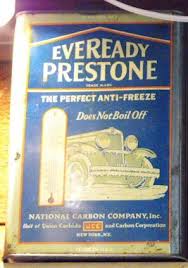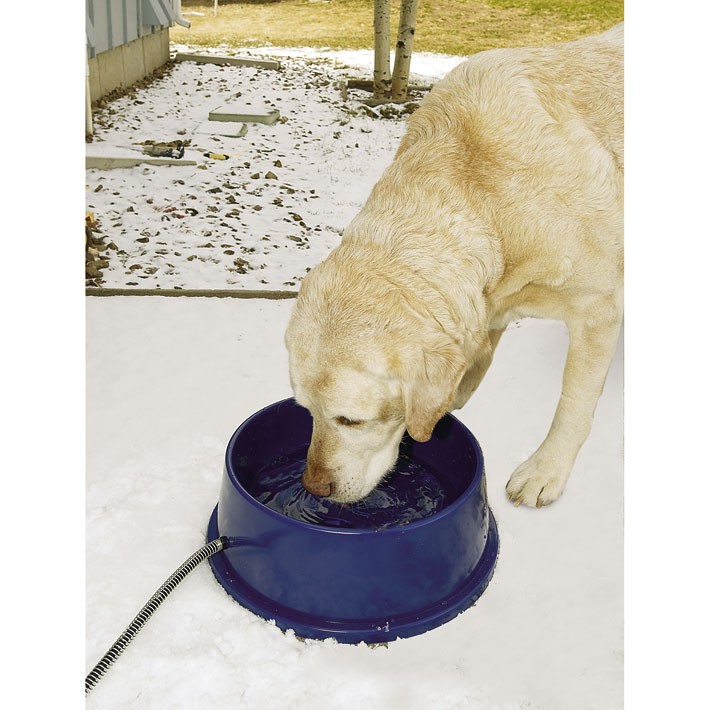That Doesn’t Mean Your Pets are Safe from antifreeze poisoning

Prestone ethylene glycol was a boom for the car industry, but a bust for the 10,000 to 90,000 animals that die every year.[/caption]
Last year, after countless pet and wildlife deaths by ethylene glycol poisoning, the Humane Society Legislative Fund (HSLF) and Consumer Specialty Products Association jointly announced on December 13, 2012 an agreement to voluntarily add the bitter flavoring, denatonium benzoate, to antifreeze and engine coolant manufactured for consumers in all 50 states and the District of Columbia. In the U.S. denatonium benzoate is frequently used in common household products and as an anti-nail biting formula.
Ethylene glycol antifreeze has been saving car radiators, but killing pets, wild animals and even kids since 1927. That’s when Prestone® first sold pure ethylene glycol antifreeze in cans to car owners. Unlike contemporary alternatives (honey, sugar, molasses and, the most popular, methyl alcohol), ethylene glycol wouldn’t boil away or burn. And it was odorless.
People have long complained that the sweet smell and taste makes the antifreeze attractive to children and pets. That may be true, and the industry should be congratulated for this life-saving move. But owners of outside pets shouldn’t feel too comfortable yet.

According to a 2005 study, cats lack the receptor likely necessary for detection of sweet stimuli. In the research domestic cats, as well as tigers and cheetahs , showed no preference between sweetened and regular water, as opposed to other animals who, like humans, prefer sweet. So, theoretically cats shouldn’t be at risk, but they are.
Outside animals may consume spilled ethylene glycol because in cold weather it could be the only drinkable liquid available. HSLF estimates between 10,000 to 90,000 animals die each year after drinking the chemical. According to National Oceanic and Atmospheric Administration, only two ounces can kill a dog or a child. As little as one teaspoon can prove lethal to a cat. (Younger animals may be even more susceptible). In records from the early 1990s, the American Association of Poison Control Centers reported about 3,400 people per year suffered from poisonings related to ethylene glycol. About 20% of them were children under six.

According to the Merck Veterinary manual, the widespread availability of antifreeze, its sweet taste and small minimum lethal dose, and the lack of public awareness of the toxicity (i.e., improper storage and disposal) contribute to the frequency of this intoxication.
In some cases, nuisance animals are intentionally poisoned antifreeze-treated food. Cats can also suffer from the chemical by simply walking through it and absorbing through the skin.
TAKE YOUR PET TO THE VET IMMEDIATELY IF HE’S ACTING ODD
Keep an eye on your pet for strange behavior. A change in behavior is often the first symptom of a legion of health concerns. If you’re worried your pet may have come in contact with antifreeze, go to the vet immediately. Getting medical attention as soon as you notice something’s wrong could mean the difference in your pet (or kid) surviving or not. Animals who receive prompt veterinary treatment can recover, but every minute you delay decreases the likelihood he survive.
is YOUR PET ACT DRUNK?
In as little as 30 minutes after first drinking ethylene glycol, an animal will appear lethargic or disorientated and he may expose his third eyelid. He may look drunk, suffering from a loss of coordination. He may drink and pee more than usual. Eventually he’ll begin to vomit. You may see ulcers around his mouth or on his tongue. His kidneys will fail. His heart may race and he’ll experience difficulty breathing . He could slip into a coma, or die.
In one nationwide veterinary survey, two out of three veterinarians reported that they treat at least one case of antifreeze/engine coolant poisoning each year.
PROTECTING PETS & WILDLIFE
Switch to antifreeze containing propylene glycol. It’s less toxic and also has a bitter taste.
Make sure outside animals have drinkable water. Provide a heated water bowl manufactured by K & H Manufacturing.









